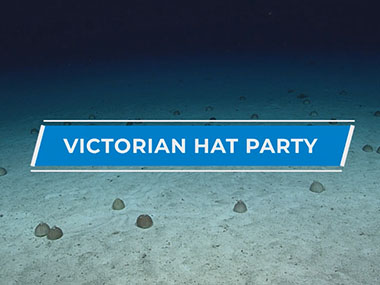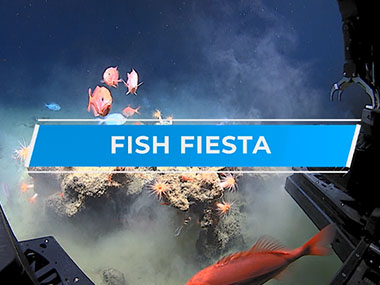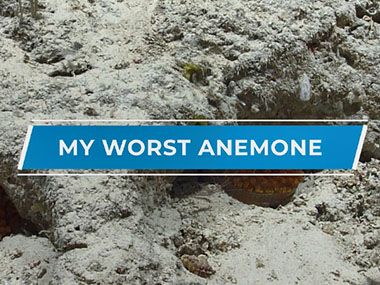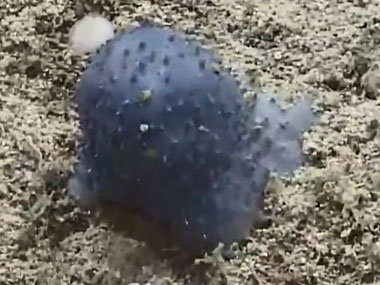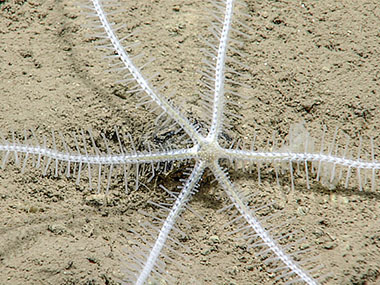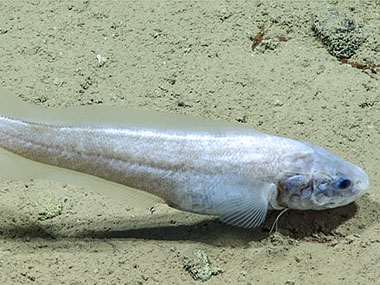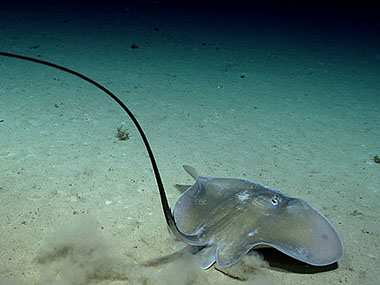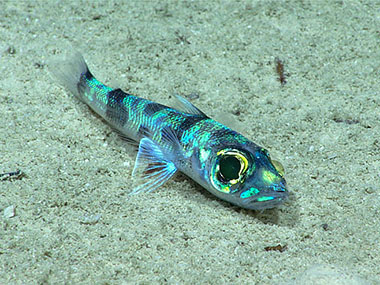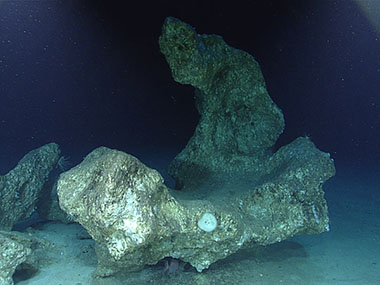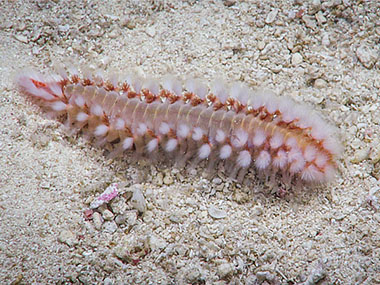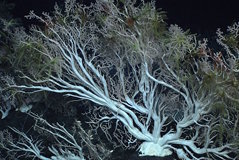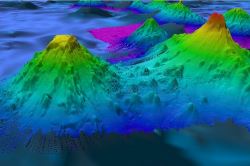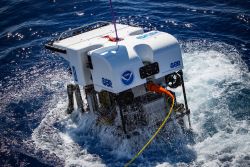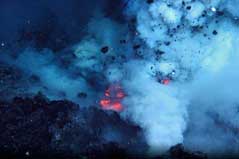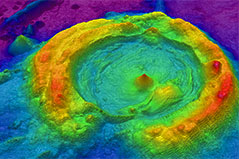Voyage to the Ridge 2022
May 14 - September 2, 2022
Expedition Overview
May through September 2022, NOAA and partners will conduct Voyage to the Ridge 2022, a series of three telepresence-enabled ocean exploration expeditions on NOAA Ship Okeanos Explorer that will include mapping operations and remotely operated vehicle (ROV) dives to collect baseline information about unexplored and poorly understood deepwater areas of the Charlie-Gibbs Fracture Zone, Mid-Atlantic Ridge, and Azores Plateau. We will also conduct a series of dives in deepwater areas in the vicinity of Puerto Rico and the U.S. Virgin Islands, building off previous work done by NOAA Ocean Exploration in the region in 2015, 2018, and March and April 2022.
Spanning the north-south length of the Atlantic Ocean and stretching an impressive 16,000 kilometers (10,000 miles), the Mid-Atlantic Ridge (MAR) is the longest mountain range in the world and one of the most prominent geological features on Earth. The majority of it sits underwater and thus much of it remains largely unexplored. With active tectonic spreading, the MAR is the site of frequent earthquakes. Spectacular hydrothermal vents may form where magma provides heat as it rises to the seafloor. These vents are known to support diverse chemosynthetic communities. However, little is known about life at these sites once vents go extinct, or what life lies beyond the vents, further away from the rift zone.
Dives conducted in deep waters around Puerto Rico will explore a wide diversity of habitats and geological features, the vast majority of which have never been explored in detail. The North Atlantic, including the Caribbean Sea, plays a pivotal role for humankind, enabling a myriad of ecosystem services, such as food security, protection from hazards, trade, tourism and recreation, which collectively provide employment and livelihood opportunities for millions of people. Despite its critical importance, we have only begun to understand the region’s deep-sea resources, oceanography, bathymetry, geology, ecosystems, and trans-Atlantic biological connectivity.
Voyage to the Ridge 2022 will seek to close some of these gaps and increase our understanding of the North Atlantic’s geological context and past and future geohazards, the diversity and distribution of coral and sponge communities, and how populations of deep-sea species are related across these regions and throughout the deepwater Atlantic basin.
The first Voyage to the Ridge 2022 expedition, from May 14 - June 7, will include mapping operations to collect acoustic data of seafloor and sub-seafloor geomorphology and water column habitats of the Charlie-Gibbs Fracture Zone on the Mid-Atlantic Ridge. The collection of high-resolution mapping data is a key element of every NOAA Ocean Exploration expedition on Okeanos Explorer and mapping data will be instrumental to planning subsequent ROV dives.
July 9 - July 30, we will conduct mapping operations and dives using our two-bodied ROV system to explore the Mid-Atlantic Ridge (north of the Azores) and the Azores Plateau. And finally, during the third Voyage to the Ridge 2022 expedition, ROV and mapping operations will focus on the Azores Plateau and the Mid-Atlantic Ridge (south of the Azores) from August 6 - August 18 and deep waters near Puerto Rico from August 25 - September 2.
ROV dives may span depths ranging from 250 to 6,000 meters (820 to 19,685 feet) deep. During dives, we expect to explore deep-sea coral and sponge habitats, potential hydrothermal vent and extinct polymetallic sulfide systems, fracture and rift zones, and the water column. Dives will be streamed daily during the second two expeditions, from approximately 6:45 a.m. to 5 p.m. ET.
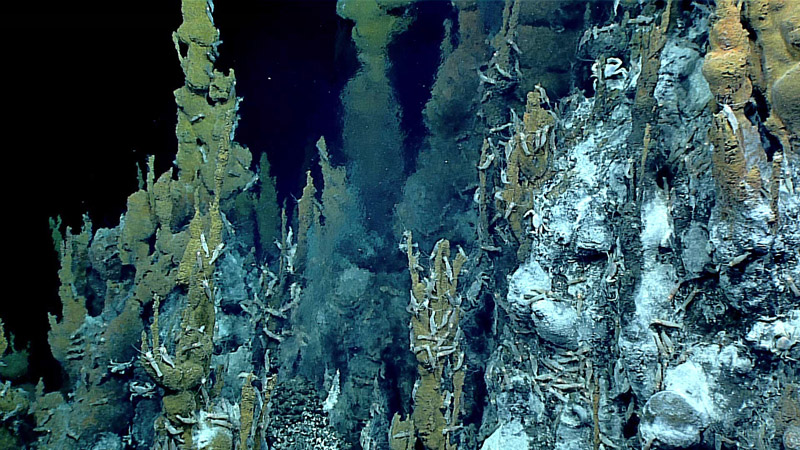
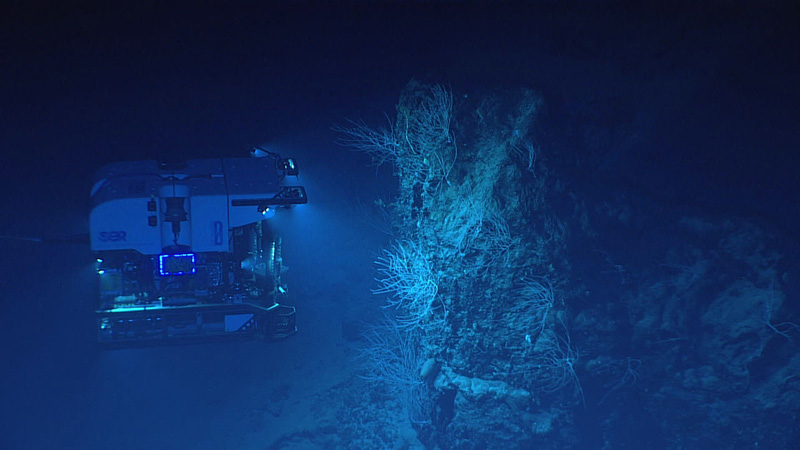
Operations
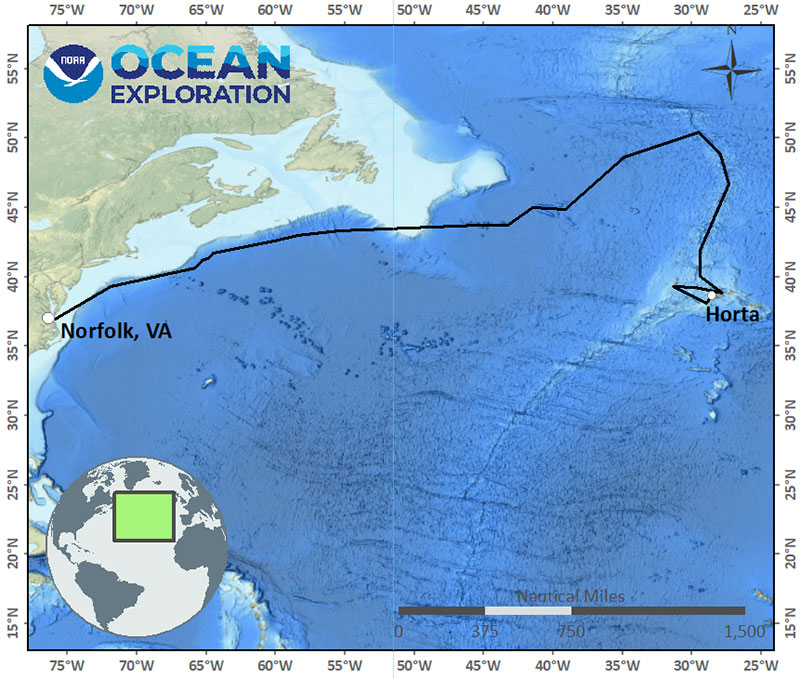
Education Content
The fact sheets below, developed by scientists and educators, demonstrate key concepts related to Voyage to the Ridge 2022 and are available in English and Portuguese.
Related Links
Media Contacts
Emily Crum
Communication Specialist
NOAA Ocean Exploration
ocean-explore-comms@noaa.gov
David Hall
Public Affairs Officer
NOAA Office of Marine and Aviation Operations
david.l.hall@noaa.gov
Voyage to the Ridge 2022 will contribute to NOAA’s Atlantic Seafloor Partnership for Integrated Research and Exploration (ASPIRE) campaign, which builds on the momentum of past U.S. campaigns and international initiatives to support ecosystem-based management of marine resources and leverages international partnerships and is a major contribution to the Galway Statement on Atlantic Ocean Cooperation and the Atlantic Ocean Research Alliance’s deep-sea mapping and exploration efforts.
Data collected during the expedition will be available in NOAA’s public data archives within 60-90 days of its completion and will be accessible via the NOAA Ocean Exploration Data Atlas.
